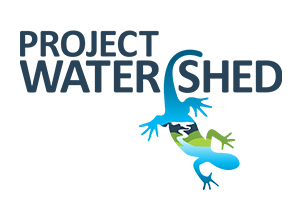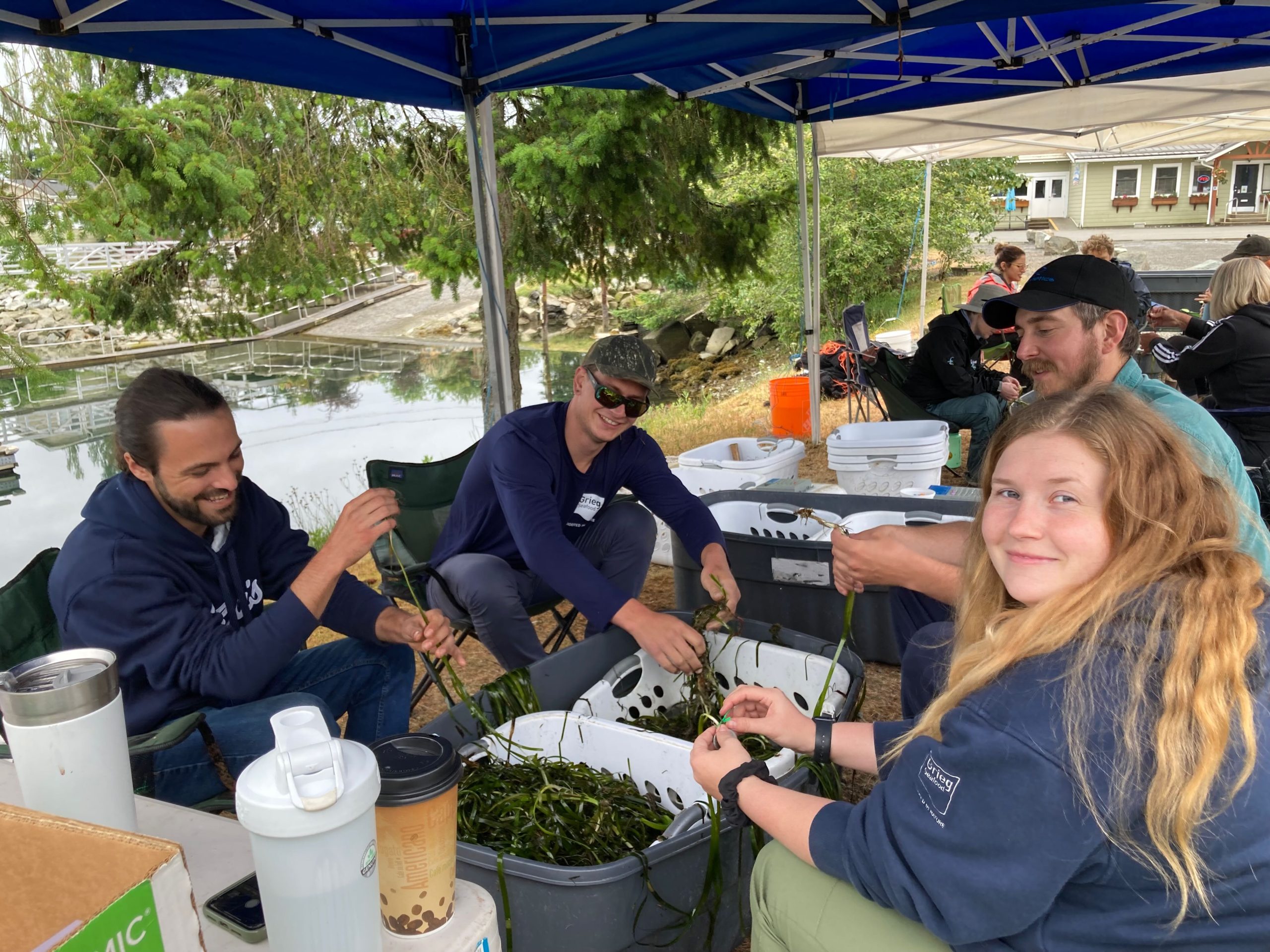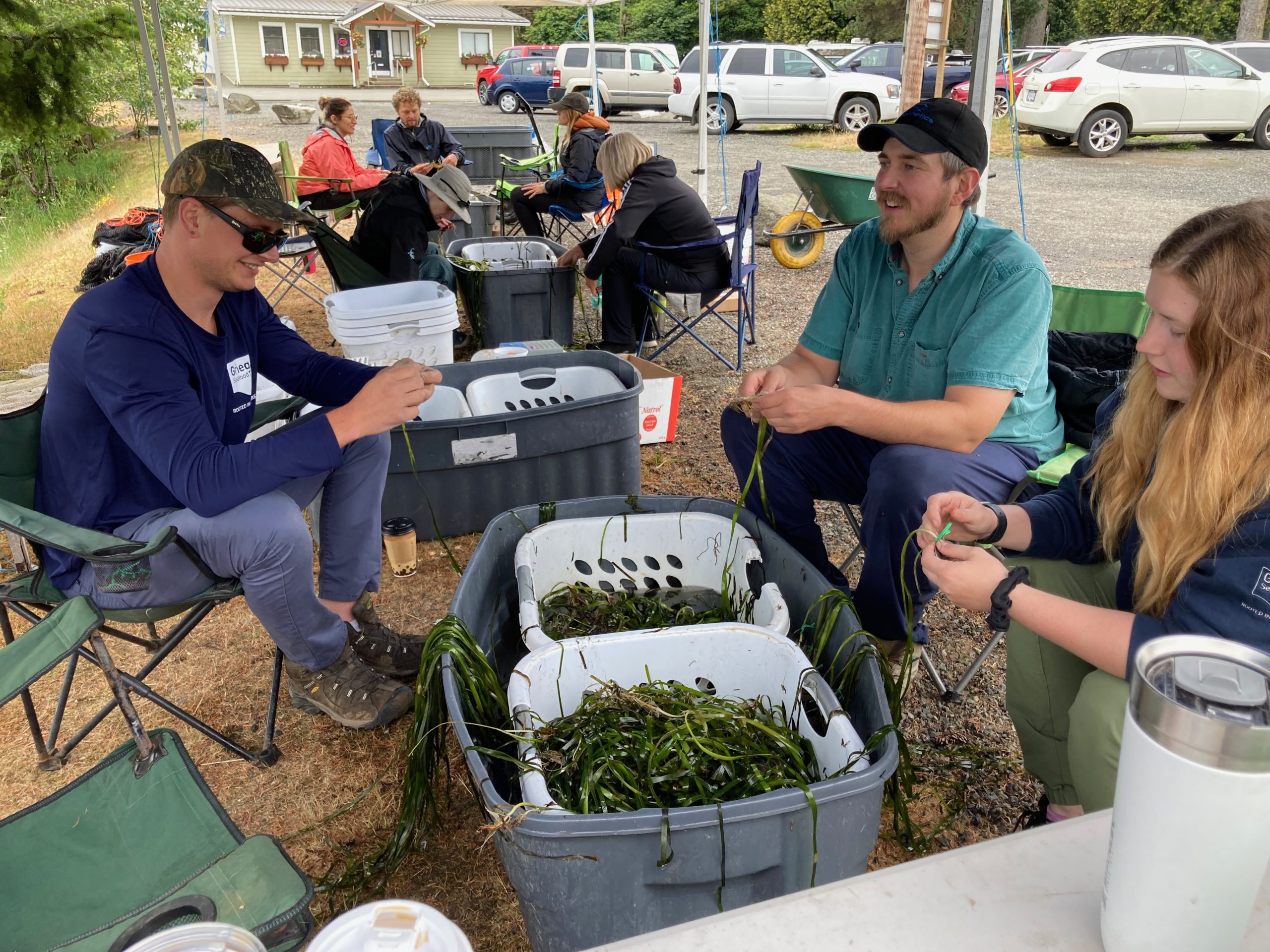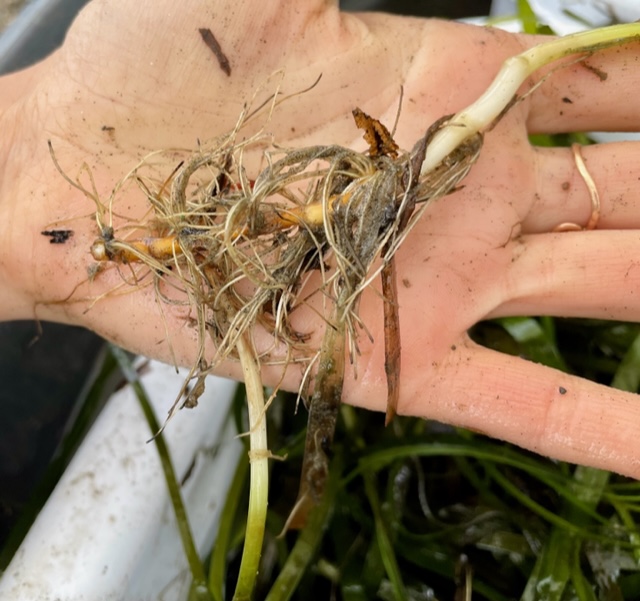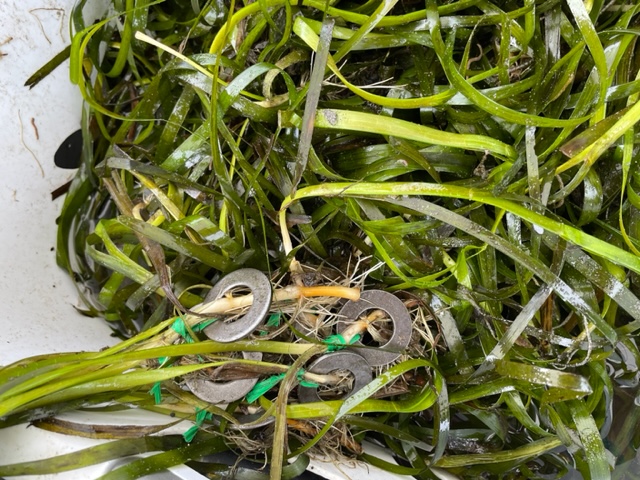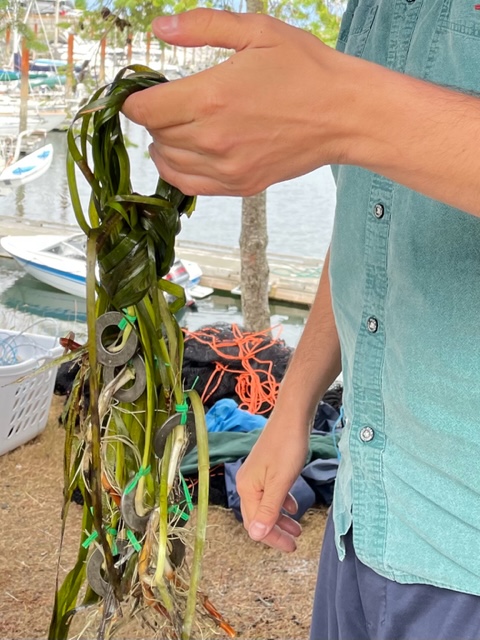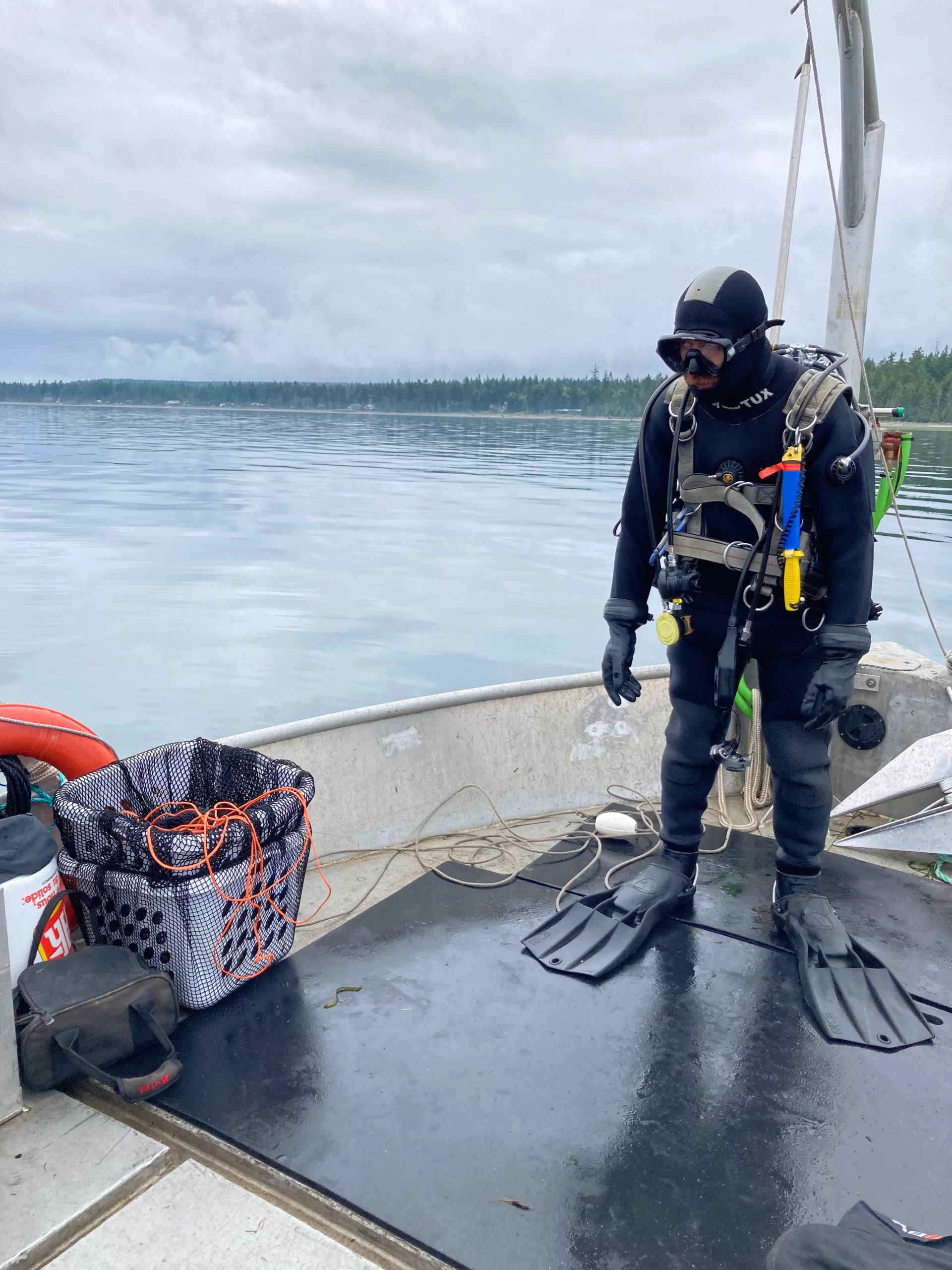June Eelgrass Restoration Completed
Between June 2 and 11, six dedicated staff members, approximately 32 volunteers and the UB Diving crew worked together to accomplish the impressive task of transplanting 6,000 stems of eelgrass! This meant first attaching ties to 6,000 washers, then tying those washers to stems of eelgrass, bundling them and planting them via boat and diver (scroll down to see the process in more detail).
The restoration area, north of Black Creek between Pacific Playgrounds Oceanside Resort and Miracle Beach, measured approximately 16 x 38 meters. Here the eelgrass was planted onto a flat underwater sandy delta at a depth of 16-18 feet. We have had great success with transplanting eelgras through this method and expect to see marine creatures using the new eelgrass within a day of the planting. Through our collective efforts, we have taken meaningful steps toward preserving and revitalizing this vital ecosystem. Since eelgrass is a blue carbon plant, we have also set the stage for increased carbon sequestration at this location.
We would like to extend a special thanks to the organizations who supported this project:
- UB Diving for their help with harvesting and plating the eelgrass.
- Pacific Playgrounds Oceanside Resort for the boat slip and allowing us to set up our tying station at the edge of their parking lot.
- WWF Canada for their financial support.
Again, we thank everyone for their dedication, time, and expertise. It is because of people and communities like ours that we are able to make a difference in the preservation and restoration of our local natural environment.
The Process
1. Volunteers fasten washers to individual eelgrass stems.
**Each stem should have healthy leafy blades and at least 3 root nodes on the rhizome portion.
2. A washer is threaded onto the stem and fastened at the transition from root to shoot.
3. The stems are bundled into groups of 10 and loaded into baskets.
4. Divers take the baskets underwater and ‘plant’ each bundle of 10 into the sediments in a grid pattern of 1 x 1 m.
Related Posts
Mallard Creek Restoration Update for 2024
Restoration work in Mallard Creek will continue this year, including invasive removal, restoring connectivity, and trial planting of a new riparian species. Volunteer events starting in September 2024.
Volunteer at Kus-kus-sum Chamber of Commerce Event
We are showing Kus-kus-sum off to businesses in the Valley through a Chamber Business to Business event. We are looking for a few volunteers to assist with this event.
Coastal Plant Monitoring
Get involved with our new vegetation community science monitoring program!
Spring Field Trips
Throughout May and June Project Watershed will be taking elementary school classes out on field trips to learn about estuary and coastal ecology and to assist with planting and plant maintenance.
Working Together to Identify Forage Fish Spawning Beaches
This year marks the 5th year of a partnership between Comox Valley Project Watershed Society and North Island College on a long-term study to examine intertidal spawning habitats of forage fish in the northern Salish Sea.
Glen Urquhart Update – Spring 2024
Latest news from Glen Urquhart restoration progress for spring 2024.

